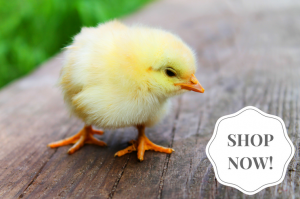
Spitzhauben chickens originate in the Appenzell district of Switzerland. They are therefore often called Appenzeller Spitzhaubens. The Swiss word spitzhauben refers to the breed’s crest of forward curving feathers, which remind Appenzell residents of their traditional lady’s bonnets.
Near Extinction
According to The Livestock Conservancy, Spitzhaubens have been known since the 16th century, kept in local monasteries as low maintenance chickens that are good layers. However, by the end of World War II the breed had nearly become extinct.
In 1953 a German poultry breeder named Kurt Fischer acquired the three original varieties — black, golden spangled, and silver spangled. Through his breeding efforts, Fischer revived the breed from complete extinction.
Fischer then helped get Spitzhauben chickens accepted into the German poultry standard. The breed has since been recognized by standards in several other European countries.
In the late 1950s, a former German prisoner of war who had been detained in Alabama and then repatriated, returned to the United States with a few dozen silver spangled Spitzhauben eggs. Long-time Alabama poultry breeder Albert McGraw hatched the eggs. The resulting chickens were the first known Spitzhaubens in the United States. To this day, silver spangled is still the most popular Spitzhauben variety.
Meanwhile, various breeders have since imported Spitzhaubens from Europe, increasing the gene pool of the silver spangled variety in North America and introducing other varieties. Despite these imports and subsequent breeding efforts, Spitzhaubens remain relatively rare in the United States.
The American Poultry Association does not yet recognize the breed. The Appenzeller Spitzhauben Club of America, however, is working to get the breed standardized.
Hardy Appenzeller Spitzhauben Chickens
Having come from the alpine region of Switzerland, near the borders of Germany and Austria, the Spitzhauben is a cold hardy breed. But it also tolerates warm, humid weather, making it an all climate chicken.
This mid-size breed lays 150 to 180 medium to large white-shell eggs per year. It is one of the few breeds that naturally lay during the dark winter months. The hens may or may not brood. When they do, they make terrific mothers.
Spitzhaubens tend to be a little more talkative than most other chicken breeds. They are active and alert, making them exceptional foragers.
They fly really well and like to roost in trees. Keeping them confined requires either an especially tall fence or a covered run. Clipping their wings is another option, but makes them more susceptible to predation.
Spitzhaubens have a bright red, V-shaped comb, blue-gray legs, and white earlobes and skin. Roosters weigh about 4.5 pounds and hens weigh about 3.5 pounds.
Spitzhaubens at Cackle Hatchery®
Spitzhauben chickens in the United States diverge quite a bit from the original breed. Most notable is their non-traditional crest. The feathers should be rather sparse, stand upright, and curve toward the front, rather than being round, full, and curving toward the back.
Like other serious Spitzhauben breeders, Cackle Hatchery has been working to correct this defect. Working toward that improvement, Cackle Hatchery imported three silver spangled roosters in 2013 for its own breeding program. The silver spangled Appenzeller Spitzhauben has silvery white feathers, each marked with a V-shape black spangle at the tip.
Cackle Hatchery also breeds golden spangled Appenzeller Spitzhaubens from foundation stock obtained in 2015 from Dick Dickerson, a member of the Appenzeller Spitzhauben Club of America. The golden spangled variety has golden red feathers, each ending with a black V-shape spangle.
Since 2021, Cackle Hatchery has been breeding chamois spangled Appenzeller Spitzhaubens. This pastel variety has pale golden buff plumage set off by creamy white spangles.
Currently Cackle Hatchery is developing a red spangled Appenzeller Spitzhauben. This variety is similar to the golden spangled, except that the background color is deep red rather than golden. Also, the red spangled is a bit smaller than other varieties.
With so much to offer, it’s no wonder that heritage Appenzeller Spitzhauben chickens are garnering interest among serious poultry enthusiasts.
And that’s today’s news from the Cackle Coop.


We were lucky enough to receive a male and female gold crested in our rare breed pack. My kids want to show both at the county fair. I do know they are not APA recognized but I can enter them. Does anyone know what class I would put them in for this. I have researched but have not found out yet. Thanks Tina1762000@yahoo.com